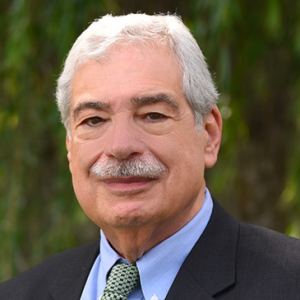SYRACUSE — HealtheConnections RHIO Central New York is in the process of switching to a new software vendor for the health-information exchange (HIE) it operates in an 11-county region around Syracuse.
The regional health-information organization, or RHIO, is moving from software and support services that Eden Prairie, Minn.–based OptumInsight’s Axolotl provided under a three-year contract. That contract will expire in March, and HealtheConnections decided to switch to software from Mirth Corp. of Irvine, Calif.
In the future, the changes are slated to lead to some new functionality for the HIE. An HIE gives authorized medical providers the ability to access patient information and medical histories. Patients must give their consent for their information to be available to different medical providers via the HealtheConnections HIE.
(Sponsored)

Criminal Liability for Employment Law Violations?
New York employers are often surprised to learn that wage law violations can lead to criminal penalties in addition to financial penalties. Whether payroll is outsourced, or a staffing agency

The Influence of Economic Uncertainty on Business Value
Businesses face uncertain conditions today, including geopolitical and cybersecurity risks, inflation concerns, environmental issues, and a lack of clarity about future tax laws and interest rates. Here’s an overview of
Providers will have a new interface for accessing patient records because of the move to the new software platform. But HealtheConnections isn’t making the change for cosmetic purposes.
“Our biggest reason for doing it was to deliver more functionality at a better price point,” says Rob Hack, executive director of HealtheConnections RHIO. “We are getting a much more flexible, adaptable platform at a reduced rate.”
Hack declines to disclose a specific dollar amount that the RHIO will save because of the change. He calls it “significant.”
Switching to the new Mirth software started in December. HealtheConnections is working to redirect HIE data feeds and transfer existing patient, provider, and audit data. The changes, which were endorsed by HealtheConnections’ board of directors in October, should be complete in the middle of May.
Mirth’s platform’s consolidated patient records are set to include diagnoses, medications, conditions, allergies, immunizations, social histories, vitals, and custodians. In the future, HealtheConnections plans to add new functions: configurable clinical alerts and triggers, a continuity of care document exchange, clinical messaging between providers, and a secure mail exchange with participating regional and national providers.
Moving to the Mirth platform will help HealtheConnections connect physicians’ offices to the HIE, according to Hack.
“What’s really important for us here is we need to be very efficient in terms of being able to connect physician’s offices, practices, and clinicians,” he says. “I believe we’ll be able to speed our ability to connect.
HealtheConnections has connected 17 hospitals, six independent regional diagnostic centers, and more than 100 physician practices and health-care organizations. Its HIE has at least one health record for 1.2 million of the region’s patients, and 600,000 patients have given consent for physicians to view their information via the exchange.
The revamped HIE is also moving toward connecting with other entities, according to a document Hack provided. HealtheConnections circulated the document to its stakeholders to explain the software-vendor change.
It is taking steps toward sharing information with the U.S. Veterans Administration and the Department of Defense. And it may be able to add capabilities through the Statewide Health Information Network of New York (SHIN-NY).
“The SHIN-NY will be coming together in 2013,” Hack says. “Everything is looking very positive and favorable that we will have interoperability between the RHIOs in New York.”
Health-care organizations participating in the HIE should not notice any downtime with the change in vendors, according to Hack. Mirth is building its HIE platform in parallel to the existing Axolotl system.
Participating organizations will need to revalidate their users. Patients will not have to sign new consent forms, though.
“The revalidation of users is giving them new IDs,” Hack says. “That’s providers only. One of the things we have to do is we have to work with our current providers, retraining them with this new interface.”
HealtheConnections operates on an annual budget of about $4.5 million. Its funding comes from many of the major health-insurance players in the Central New York market — Excellus BlueCross BlueShield, MVP Health Care, EBS-RMSCO, Inc., and POMCO Group.
The RHIO employs 12 people and plans to hire three more this year. Its coverage area is made up of Onondaga, Oswego, Cayuga, Tompkins, Cortland, Madison, Oneida, Herkimer, Lewis, Jefferson, and St. Lawrence counties.
It is headquartered in 6,700 square feet of space at the State Tower Building at 109 S. Warren St. in Syracuse. The RHIO shares that space with its sister organization, HealtheConnections Health Planning Central New York.
“The reason we exist is, if a clinician is looking in the exchange and sees your consolidated health records, they can make better decisions,” Hack says. “They can see you’ve already had X-rays. They can look at your health history. Now we don’t need to admit you to the hospital, and now we can save money.”
The Central New York Business Journal Publisher Norman Poltenson serves on the HealtheConnections board of directors.
Contact Seltzer at rseltzer@cnybj.com



